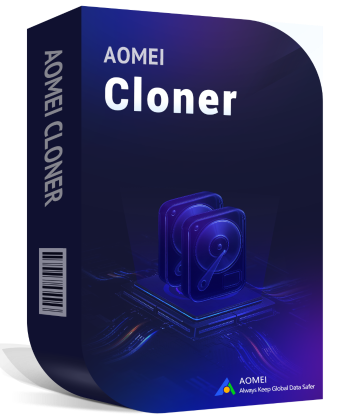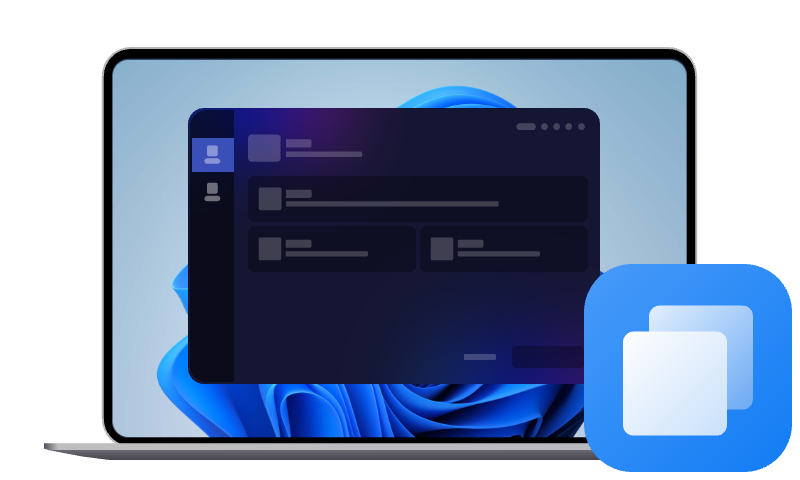Laptop Hard Drive Crashes: Symptoms & What to Do?
How to fix laptop hard drive crash? What is the best solution to perform laptop hard drive replacement without losing data? Read this post to get a complete guide.
What Are the Symptoms of Hard Disk Failure?
Disk failures rarely happen without warning. If you pay close attention, you'll likely notice some unusual signs before your laptop's hard drive crashes completely. These early danger signs include:
- Frequent freezing or crashes: Random freezing, system hangs, or the Blue Screen of Death (BSOD) popping up more than once should be a cause for immediate concern.
- Sluggish performance: If your laptop takes forever to start or programs are lagging, it could be the hard drive struggling to read data.
- Clicking or grinding noises: If your laptop is suddenly making mechanical noises it never used to, like clicking, grinding, or whirring sounds, it usually means the drive heads are falling.
- Hard drive not detected/recognized/showing up: You boot your laptop, and suddenly your drive doesn't show up or even be listed.
- Data corruption: Files that used to open properly now get errors, are lost, or are unreadable. A laptop hard disk crash usually damages critical sectors and results in data loss.
Some of the laptop hard drive failure symptoms above may be a result of insufficient disk space, like system freezing. In such a case, you can free up disk space or upgrade disk storage to get rid of it. But most of them mean laptop hard drive crashed or is going to crash.
What Happens When a Laptop Hard Drive Fails?
When your hard drive fails, your laptop can no longer access or store data properly. This means the operating system may not load, files can't be read or saved, and apps might crash unexpectedly. There are two types of Lenovo/HP/Dell laptop hard drive failures:
1️⃣Physical disk failures: These involve physical components like the actuator arm, read/write heads, or spinning platters. Often, mechanical failures are permanent and require professional recovery.
2️⃣Logical disk failures: These are software-related, including file system corruption, malware damage, or bad sectors. Logical issues are sometimes reversible with the right tools.
However, a laptop hard drive crash doesn't just mean you can't open files. It can trigger a number of problems, such as the system won't boot, software malfunction, OS instability, and so on.
What to Do If Your Laptop Hard Drive Crashes?
Now that you've identified the symptoms and understand the consequences, let’s get into what to do when your laptop hard disk crashes. Follow this clear, step-by-step guide below to either repair, replace, or recover your data.
Step 1. Remove the Hard Drive (If Possible)
Before trying any software-based fixes, remove the drive, especially if the laptop won't boot or makes strange noises. This reduces the risk of further damage when the hard disk crashes in laptop.
Step 1. Disconnect the power source.
Step 2. If your laptop allows, open the back panel and remove the hard drive.
Step 3. Use an external SATA-to-USB adapter to connect it to another computer.
Step 4. Check if the drive is recognized. If it is, back up your important files right away.
Step 2. Run Diagnostic Tools for Disk Check/Repair
Then, you may need to check the health of the disk, which is crucial for identifying whether it’s truly dead or can still be revived.
👉How to Check if the Hard Drive is Still Usable
Step 1. Use a SATA-to-USB adapter or an external hard drive enclosure to connect the disk.
Step 2. Press Win + S, type CMD, and then select Run as administrator.
Step 3. Type wmic diskdrive get status in the Command Prompt window and hit Enter.
Step 4. If your hard disk is still usable, you will get an OK return message. If not, you may see Pred Fail.
👉How to Repair Disk with Logical Errors
Step 1. Run Command Prompt as an administrator.
Step 2. Input the chkdsk command: chkdsk E: /f /r
- The /f parameter tells chkdsk to fix any errors it finds.
- The /r parameter instructs it to locate the bad sector and recover any readable information.
Step 3. When the chkdsk process is complete, navigate to the hard drive in File Explorer and check if you can access your files properly.
Step 3. Replace the Failing Hard Drive
Once the drive is accessible, it’s time to copy all your data so that you can replace your disk with a new one without losing anything. AOMEI Cloner is a top-rated disk cloning tool that comes to help.

- Full Disk Clone: Copy everything, operating system, programs, and all your files from one drive to another.
- OS Migration: Transfer only OS and essential boot files to new drive, perfect when upgrading/replacing your laptop hard drive with a smaller SSD.
- Selective Partition Clone: Copy a specific partition instead of the entire disk, great for transferring crucial data parts.
- Intelligent Clone: Copy only the used sectors, useful when cloning hard disk with bad sectors.
- SSD Alignment: Automatically align partitions to boost your SSD's speed and lifespan for better performance.
Please connect your old and new drives to the computer, and run AOMEI Cloner > go to Clone > select Disk Clone to transfer data across disks with ease.
Step 4. Try Data Recovery
If cloning fails entirely or you didn't get the chance to back up your files, here comes - laptop hard drive crashed how to recover data? You may try dedicated recovery software. Here are some popular choices:
Recuva - Good for quick recovery of deleted files.
AOMEI FastRecovery - Dedicated data recovery software specifically designed to retrieve lost or deleted files from Windows PCs.
R-Studio - Best for serious data recovery on damaged drives.
Step 5. Take Preventive Measures
Once you've recovered or replaced your drive, don’t make the same mistake twice. Here’s how to reduce future risks:
- Regular backups: Use cloud services or external hard drives for weekly or daily backups, depending on your needs.
- Replace old drives: HDDs that are more than 3-5 years old have reached the end of their lifespan.
- Upgrade to SSD: SSDs have fewer moving parts and fewer points of failure than HDDs.
- Keep your system cool: Overheating is a major threat to hard drive damage.
- Avoid Physical Shock: Do not move your laptop while it is powered on or in sleep mode.
FAQs about Laptop Hard Drive Crashing
#1. Can you recover a crashed laptop hard drive?
Yes, but depending on the severity of the crash. Logical crashes (like corrupted files or OS failures) are easier to fix using software. Mechanical crashes are more severe and often require professional recovery services.
#2. What happens if I replace a laptop hard drive?
You’ll need to reinstall the operating system unless you cloned your old drive. With a clone, it boots as if nothing happened. Apps, files, and settings stay the same.
#3. What is the lifespan of a laptop hard drive?
Typically, 3 - 5 years for HDDs. Factors like usage frequency, temperature, and physical shock can shorten or extend this lifespan. And usually 5 to 10 years for SSDs, with fewer mechanical risks.
#4. Can you boot from USB without a hard drive?
Absolutely. You can create a bootable USB with Windows, Linux, or recovery tools and boot your laptop even without an internal hard drive installed. It’s a handy tip for diagnostics or temporary usage.
#5. Can I use SSD instead of HDD in my laptop?
Yes. Most laptops support SATA-based SSDs, and many newer models support NVMe M.2 drives. Replacing an HDD with an SSD significantly improves performance and durability. And, for laptops with more than one disk bay, you may also use HDD and SSD together to boost PC performance.
Summary
A laptop hard drive crash doesn't have to mean permanent data loss. If you understand the symptoms, act quickly, and use the right tools - like AOMEI Cloner for replacing laptop HDD with SSD or other software for data recovery, you can minimize downtime and protect your data.

